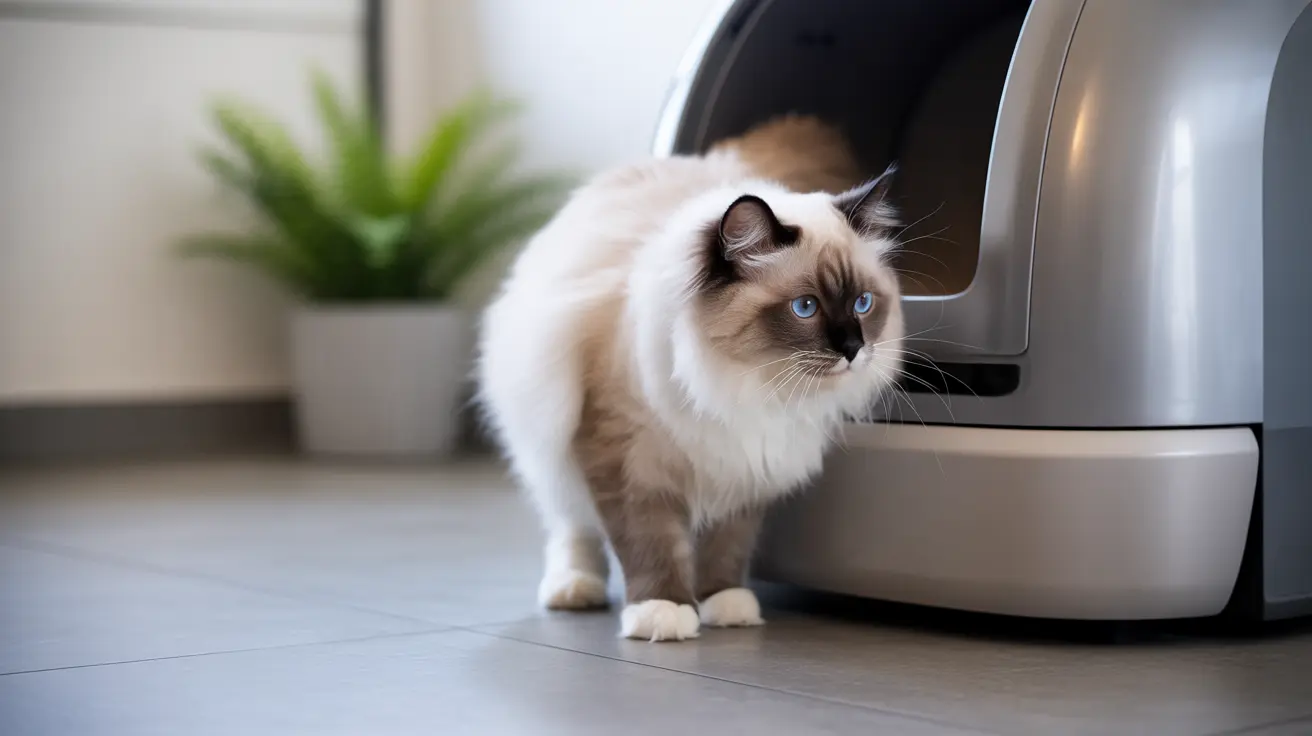Understanding Why Cats Resist the Litter-Robot
Cats are creatures of habit, and their resistance to the Litter-Robot often stems from several natural instincts and preferences:
Natural Wariness of New Objects
Cats instinctively approach unfamiliar objects with caution, viewing them as potential threats. The Litter-Robot's size and mechanical nature can trigger this defensive response, causing initial avoidance behaviors.
Sensitivity to Mechanical Sounds
The cleaning cycle of the Litter-Robot, though relatively quiet at 25-40 decibels, can startle cats who are used to traditional static litter boxes. This sudden movement and noise can create negative associations.
Essential Steps for Successful Transition
Proper Placement and Setup
Location is crucial for encouraging Litter-Robot use. Place the unit in a quiet, private area similar to where your cat's previous litter box was located. Ensure easy access and maintain consistent positioning throughout the transition period.
Gradual Introduction Process
Start with the unit unplugged and allow your cat to investigate it naturally. Leave treats or favorite toys nearby to create positive associations. Once your cat shows comfort approaching the unit, begin the next phase of acclimation.
Creating a Comfortable Transition
Maintaining Familiar Elements
Mix some of your cat's used litter into the Litter-Robot to transfer familiar scents. Keep the old litter box nearby during the transition period, gradually making it less appealing by reducing cleaning frequency.
Progressive Operation Introduction
Begin with manual cleaning cycles when your cat is away from the area. As they become more comfortable, gradually introduce automatic cycling, always monitoring their reaction to ensure continued comfort.
Troubleshooting Common Issues
Addressing Resistance
If your cat shows continued reluctance, consider these adjustments:
- Temporarily remove the globe hood for more open access
- Use feline pheromone products near the unit
- Add a pet-safe litter attractant
- Provide extra rewards for any positive interaction
When to Seek Help
If your cat consistently refuses to use the Litter-Robot after several weeks of careful introduction, consult with your veterinarian to rule out any underlying health issues that might be affecting their litter box behavior.
Frequently Asked Questions
Why won't my cat use the Litter-Robot even after I set it up?
Cats may avoid the Litter-Robot due to fear of the unknown, sensitivity to mechanical sounds, or strong attachment to their previous litter box. Ensure you're following a gradual introduction process and maintaining familiar elements during the transition.
How can I help my cat get used to the Litter-Robot's noise and movement?
Start with the unit turned off, then introduce manual cleaning cycles when your cat is away. Gradually progress to automatic operation as your cat becomes more comfortable with the device's presence.
What is the best way to transition my cat from a traditional litter box to a Litter-Robot?
Use a gradual approach: keep both boxes available, transfer familiar litter scents, maintain consistent placement, and use positive reinforcement. Allow your cat to set the pace of the transition.
Can the type or scent of litter affect whether my cat uses the Litter-Robot?
Yes, cats are sensitive to litter texture and scent. Use the same type of clumping litter your cat prefers, and make any necessary litter changes gradually by mixing old and new varieties.
What should I do if my cat refuses the Litter-Robot despite a gradual introduction?
Re-evaluate the unit's location, ensure privacy, try different litter types, and consult your veterinarian to rule out medical issues. Some cats may need extended transition periods or might prefer traditional litter boxes.
Conclusion
Successfully transitioning your cat to the Litter-Robot requires patience, understanding, and consistent positive reinforcement. By following these guidelines and remaining attentive to your cat's comfort level, you can significantly increase the chances of successful adoption of this modern litter box solution.






